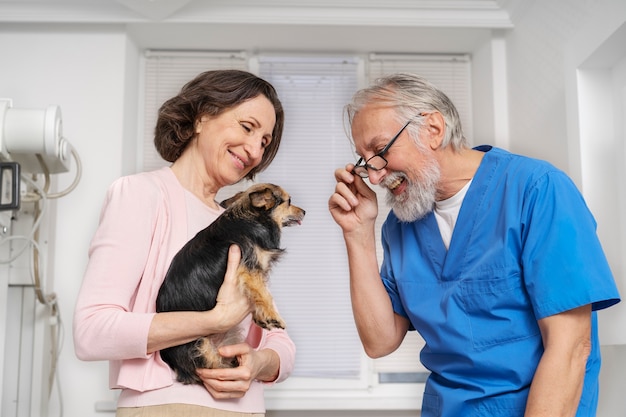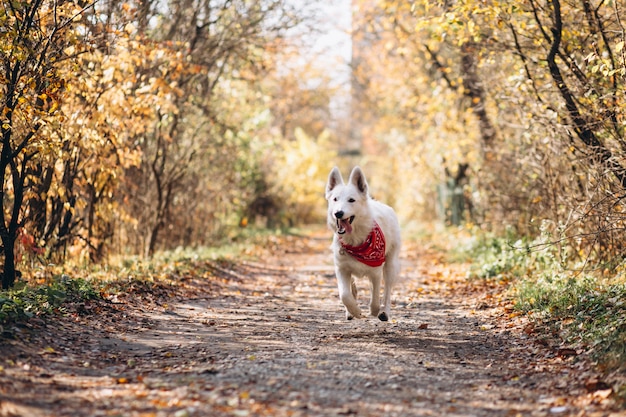Is Your Pet Limping? Causes and When to See the Vet

Is Your Pet Limping? Causes and When to See the Vet
If you’ve noticed your dog or cat suddenly limping around the house or hesitating to put weight on one leg, it’s natural to feel concerned. Limping, also called lameness, is a common issue seen by veterinarians in Riverview, FL, and it can have a variety of causes—from mild muscle strains to more serious injuries or underlying health problems. At Riverview Veterinary Hospital, our experienced veterinary team understands how distressing it is to see your pet in pain or struggling to move comfortably. That’s why we’re dedicated to providing comprehensive pet care and diagnostics for families in Riverview and surrounding communities. In this post, we’ll guide you through the most common pet limping causes, explain how to recognize when your pet needs professional help, and show how our hospital can support your pet’s recovery every step of the way.
Whether you’re searching for quality veterinary services near me or need information about veterinary diagnostics in Riverview, our goal is to help you make informed decisions for your pet’s wellbeing. We’ll walk through the signs to watch for, what might be causing your pet’s limp, treatment options, and when it’s time to schedule an appointment with our veterinary team.
Recognizing Limping in Pets: Signs and Symptoms
Limping can look different depending on your pet’s size, age, and the underlying issue. Sometimes, the limp is subtle, with only a slight hesitation or change in gait. Other times, the lameness is obvious, and your pet may refuse to use a limb altogether. Key symptoms to watch for include favoring one leg while walking, sudden reluctance to climb stairs or jump onto furniture, and noticeable changes in posture or stride. Additionally, you might notice swelling, heat, or sensitivity when touching the affected area. Some pets vocalize, yelp, or become withdrawn if the pain is severe.
Other warning signs that often accompany limping in dogs and cats are licking or chewing at a paw or leg, difficulty rising after rest, and visible wounds or bruising. If your pet is limping after playtime, a walk, or even a simple leap off the couch, it’s important to monitor their movement closely. Sometimes, pets with chronic joint issues, such as arthritis, will show a gradual onset of limping, especially in the morning or after periods of inactivity. In contrast, limping that appears suddenly—particularly after trauma or intense activity—may point to an acute sprain, fracture, or soft tissue injury.
For pet owners in Riverview who notice these signs, it’s crucial to keep track of when the limp started, how long it lasts, and whether it worsens with activity. This information can be invaluable during your comprehensive pet exam and helps our veterinarians pinpoint the most likely source of the problem.
Common Causes of Limping in Dogs and Cats
Understanding pet limping causes is the first step toward helping your companion feel better. Limping can result from a wide array of issues, including injuries, chronic conditions, and even infections. In dogs, soft tissue strains, ligament tears (such as cranial cruciate ligament injuries), and paw pad injuries are frequent culprits. Cats are also prone to soft tissue injuries, especially if they jump from high places or get their claws caught in household objects.
Other possible causes of limping in pets include broken bones, dislocated joints, and torn nails. In some cases, foreign objects like thorns or glass can become embedded in a pet’s paw, causing pain with every step. Arthritis is a common source of chronic lameness in older animals, particularly large breed dogs and senior cats. Joint inflammation, hip dysplasia, or luxating patella may also lead to intermittent or progressive limping.
Occasionally, limping is linked to underlying medical issues that are not readily visible. Infections of the bone or joint, autoimmune disorders, and certain types of cancer can all result in lameness. In Florida’s warm climate, outdoor pets may be more susceptible to insect bites, snake bites, or even fungal infections that affect the limbs. If your pet recently experienced trauma, such as being hit by a car or falling from a height, immediate veterinary attention is critical, even if limping seems mild at first.
Our veterinary team at Riverview Veterinary Hospital uses a combination of physical examination and advanced diagnostics to identify the root cause of your pet’s limp. In many cases, digital radiology (x-rays) services help us assess for fractures, dislocations, or bone abnormalities. For soft tissue injuries or internal issues, veterinary ultrasound services may be recommended. These technologies are a key part of veterinary diagnostics in Riverview and ensure that your pet receives an accurate diagnosis and effective treatment plan.
How Our Veterinary Team Diagnoses and Treats Limping
When you bring your limping pet to our hospital for a wellness exam, our veterinarians will start by gathering a thorough history and conducting a hands-on assessment. This includes gently feeling the affected limb, checking for swelling, heat, or tenderness, and evaluating your pet’s overall gait and posture. Depending on your pet’s age, activity level, and symptoms, our diagnostic approach may involve a combination of in-house laboratory tests, x-rays, and ultrasounds. These tools allow us to distinguish between bone injuries, soft tissue damage, or joint issues as the underlying pet limping causes.
Treatment options for limping depend on the diagnosis. For mild sprains or strains, conservative management such as rest, anti-inflammatory medications, and controlled activity may be recommended. If an infection is present, appropriate antibiotics or wound care will be required. For more serious injuries, such as fractures or ligament tears, surgical intervention may be necessary, and our hospital provides a range of surgical services to address these situations.
Pets experiencing pain and inflammation benefit from advanced therapies such as laser therapy for pets, which can accelerate healing and provide significant relief. For chronic conditions like arthritis, especially in older animals, our senior pet care services focus on pain management, joint support, and maintaining mobility. Our veterinary professionals will work with you to develop a tailored recovery plan, including physical rehabilitation, dietary support, and ongoing monitoring.
Throughout the diagnostic and treatment process, we ensure that you understand each step and what to expect. If advanced surgical options such as amputation or orthopedic procedures are required, we offer compassionate guidance and support for you and your pet.
Home Care and Prevention: Supporting Your Pet’s Mobility
Pet owners can play a vital role in supporting their pet’s recovery and preventing future episodes of limping. Immediate home care steps include limiting your pet’s activity, preventing jumping or rough play, and providing a comfortable, non-slip resting area. You may need to assist your pet with stairs or help them in and out of the car. Applying a cold compress to a swollen joint, if advised by your veterinarian, can help reduce inflammation in the first 24 hours after injury.
For chronic conditions such as arthritis, maintaining a healthy weight is crucial to reduce joint stress. Gentle, regular exercise—such as short walks or controlled play—helps keep muscles strong and joints flexible. Nutritional supplements, such as glucosamine and omega-3 fatty acids, may also support joint health. Regular nail trims, paw checks after outdoor activities, and prompt removal of foreign objects can prevent many common causes of limping in dogs and cats.
Scheduling routine veterinary wellness exams allows our veterinarians to monitor your pet’s mobility, identify early signs of joint disease, and recommend preventive care tailored to your pet’s lifestyle. In areas like Riverview, where outdoor activities and warm weather are common, keeping up with preventive care is key to reducing the risk of accidents, bites, or infections that may lead to lameness.
When to See a Vet for Limping: Clear Guidelines for Pet Owners
Many pet owners wonder when to see a vet for limping, especially if their pet seems only mildly affected. As a general guideline, any limp that lasts more than 24 hours, worsens over time, or is accompanied by severe pain, swelling, or open wounds should be evaluated by a veterinarian as soon as possible. Immediate veterinary attention is also necessary if your pet refuses to bear weight on a limb, cries out in pain, or shows signs of fever, lethargy, or loss of appetite. Sudden, non-weight bearing lameness, or limping after trauma, should never be ignored.
For chronic or intermittent lameness, especially in senior pets, a veterinary assessment can help prevent the progression of arthritis or other joint issues. If you are unsure about the severity of your pet’s limp, don’t hesitate to contact our veterinary team for advice. Our goal is to provide the best veterinarian near me experience for families in Riverview and surrounding communities, ensuring that your pet receives prompt, compassionate care.
We encourage you to schedule a wellness examination if you notice persistent limping, changes in your pet’s movement, or any signs of discomfort. Early intervention can make a significant difference in your pet’s long-term health and mobility.
Supporting Your Pet’s Recovery with Riverview Veterinary Hospital
Seeing your beloved dog or cat struggle with limping can be heartbreaking, but you don’t have to navigate this challenge alone. At Riverview Veterinary Hospital, our experienced team of veterinarians is here to help you understand pet limping causes, provide advanced diagnostics, and create a personalized treatment plan for your pet’s speedy recovery. Whether you’re looking for veterinary diagnostics in Riverview or searching for a vet near me you can trust, our hospital is equipped to handle everything from routine injuries to complex orthopedic issues.
If your pet is limping, don’t wait to seek support. Schedule an appointment today by calling (813) 677-3100 or visiting our Riverview location. Our veterinary team will ensure your companion receives the attentive, thorough care they deserve, with access to advanced digital radiology services and compassionate follow-up.
Your pet’s comfort and mobility are our top priorities. For quality veterinary services near me and expert guidance on all aspects of your pet’s health, trust the professionals at Riverview Veterinary Hospital to be your partner in lifelong pet wellness.


.jpg)
















